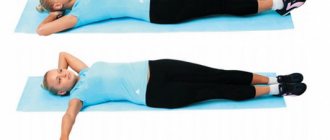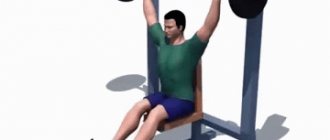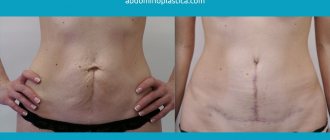Pregnancy and childbirth inevitably lead to stretching of the intimate muscles and slight displacement of organs in the pelvis. The reason is the constant pressure of the uterus, which only increases with each trimester. After the baby is born, the mother should think about how to quickly return the body to its previous shape. You can speed up the process and improve sexual health with the help of Kegel exercises (after labor, they can only be started with the permission of a doctor).
Dr. Kegel developed a special complex for the treatment of women who suffered from urinary incontinence during coughing, exercise and laughter. The system is aimed at increasing the tone of the perineal muscles. In practice, it has been found that regular contractions help get rid of not only incontinence, but also other problems. Around the world, millions of women practice Kegel exercises after childbirth. The effectiveness of this technique is confirmed by a large number of positive reviews, both from patients themselves and from doctors.
Why do you need Dr. Kegel exercises after childbirth?
The benefits of specially designed exercises to strengthen the vaginal muscles are invaluable. By practicing regularly, you can achieve the following results:
- quickly return the uterus to its prenatal form or as close to it as possible;
- prevent prolapse of organs in the pelvis or help them return to their physiological position;
- train the muscles of the vagina - it will narrow slightly and become more sensitive. Such changes will change your sex life for the better;
- reduce the risk of inflammatory diseases of the genitourinary system;
- accelerate the cleansing of the body from postpartum discharge;
- reduce the risk of developing urinary incontinence;
- increase blood circulation in the pelvis, which indirectly helps prevent hemorrhoids.
Before you train the muscles, the vagina should return to normal slightly. During the examination, the doctor will assess the condition of the woman in labor and give recommendations. Indications are individual and depend on how the birth took place, whether there are other diseases that cause complications, etc. Indications for training: planning pregnancy and the preparatory prenatal stage, recovery after the birth of the baby. It is also useful to perform a set of exercises for the prevention and treatment of pelvic organ prolapse, urinary and fecal incontinence, hemorrhoids, and inflammatory processes.
Doing it right
Reviews confirm that you can start training only when your doctor allows it. A woman needs to come for an appointment before starting classes, and then a month later to make sure that nothing threatens her health. Very small loads are given right away, they increase very smoothly, and only after a year you can return to the schedule in which you trained before pregnancy and childbirth.
You should listen to your feelings and body, you don’t need to do exercises that you can’t do, exercise should only be a joy. If you experience pain, dizziness or bleeding during training, you should immediately consult a doctor.
Pleasant activities accompanied by good music will help you not only improve your figure, but also improve your psychological state. Choose comfortable and beautiful clothes for training that will inspire you to new achievements, and never forget to wear a supportive bra.
How to quickly strengthen your vaginal muscles with exercises?
The main condition for achieving results from Kegel exercises after labor is regularity. Several approaches are performed daily. The first positive changes will become noticeable after about 5 weeks. They begin to train with 4 daily approaches, gradually increasing the number of training sessions to 7 each day.
The cycle consists of several variations of muscle contractions, each of which is repeated 10 times to begin with. Beginners are recommended to hold the position for 4 seconds, after a few days increase the time to 5, then to 10 seconds. First, all tasks from the complex are performed from a lying position. This way the muscles of the vagina and perineum are better felt. Subsequently, the posture changes to sitting and standing. The convenience of these workouts is that they can be performed anywhere.
A prerequisite is to empty the bladder in advance, otherwise inflammatory processes in the ureters may be provoked. Breathing must be kept even and calm.
How and when should women perform Kegel exercises after childbirth?
Your doctor will tell you when to perform a set of Kegel exercises after childbirth. If no contraindications are found, then the sooner the better. Training is not only allowed, but also necessary. In addition, when sitting at home for a long time, it is not difficult to allocate 10–15 minutes, especially since you can do this while washing dishes, rocking a baby, while walking with a stroller, etc. There is no need for special clothing, equipment or visiting the gym . Regarding nursing mothers, there is a recommendation - do not train on a full stomach and it is better after the breasts have been emptied (after feeding the baby).
When can you start training?
On average, you can start training a month after giving birth. Also, recovery of the body can last from several weeks to several months. This period is considered the most optimal. But still, we recommend that you first consult with a doctor, and only after his approval begin to engage in active physical activity.
You need to get used to a new daily routine, breastfeeding and household chores. All this also takes time, and this leaves its mark on the general condition of the young mother.
You can start training as soon as you feel that your body is ready for it, and of course, after the doctor’s approval.
What are the contraindications?
Not every woman can strengthen her pelvic floor after childbirth using the Kegel method. There are a number of contraindications that should be discussed with your gynecologist and your doctor:
- inflammation of hemorrhoidal veins during exacerbation;
- varicose veins in the intimate area and on the legs;
- oncological neoplasms in the genital area, suspected cancer;
- infectious diseases in the acute stage of their course;
- sexually transmitted infections, diseases.
If contraindications are ignored, the result may be unpredictable.
Breathing –> Core muscles –> Posture –> Everything else
This is the order in which you should work with those giving birth: always start with exercises that correct breathing.
Especially in the case of “scissors”, when the pelvis tilts down and the chest lifts up:
This is an extremely unstable situation, which can lead to some “joys”:
– difficulty breathing, – pain in the lower back, – pain in the shoulder girdle, – problems in the pelvic girdle.
For example, a simple “Dead Bug” exercise will help if you do it correctly:
You need to work not only with the top of your chest, but with your entire diaphragm, pressing your lower back to the floor; when exhaling, try to pull the ribs towards the pelvis.
It should be warned that each person is individual, and each woman needs to wait a certain time after childbirth. Be prepared for weaker core muscles - this is normal!
Start with short walks combined with light breathing exercises:
Also try to work not only with the chest (when only the ribs rise when inhaling), but with the entire diaphragm.
Moderation and regularity will bring more benefits than premature overload.
Correct exercise technique
The complex, developed by Dr. Kegel, strengthens the muscles of the pelvic floor and perineum. To understand which muscles need to be tensed, it is enough to stop the process several times while urinating. Those muscles that tensed to interrupt the process must contract purposefully. The technique of stopping urination is used once; in no case should this be experimented with constantly - this is fraught with infection of the urinary organs and the development of inflammatory processes.
Kegel exercises after childbirth are a sequence of contractions and relaxations of specific muscles. The effectiveness and speed of achieving your goals depends on how correctly the equipment is selected.
The starting position for beginners is lying with your back on the floor. Bend your legs and spread them, placing your feet close to each other. The position of the feet is chosen such that the legs bent at the knees do not slip, and the stomach and hips are relaxed. It is advisable to place one hand on your stomach to control its relaxation. It is more convenient to place the second hand under the buttocks. To restore intimate muscles after childbirth, perform the following complex:
- First exercise "Hold"
Squeeze the muscles of the perineum, hold for 3 seconds and relax. Repeat after 3 seconds. The number of repetitions is from 10 to 15. Over time, the delay is extended to 5 seconds, then to 10.
- Second exercise “Elevator”
Squeeze the muscles in the perineum, as in the first point. After 3, 5 or 10 seconds, increase the compression and hold. Imagine this is the second stage. Repeat up to the fifth step until the tension is maximum and the intimate muscles are pulled towards the uterus. Next is a gradual loosening of the contracted muscles in imaginary steps, stopping at each stage of relaxation.
- Third exercise "Contraction"
Contract and relax the muscles as quickly as possible for 5 seconds, then rest for 5 seconds and repeat. Do several approaches.
In addition to those listed, there are a dozen more useful workouts, but to get started, it’s enough to focus on these three.
Possible mistakes during training
Before the pelvic floor muscles recover after childbirth, women may repeatedly experience ineffective exercise. The reason is the wrong technique. Common mistakes:
- The gluteal muscles and abs tense. The work should involve exclusively intimate muscles;
- abnormal breathing rhythm or delay due to tension;
- full bladder;
- failure in the training schedule, performing them from time to time, without a systematic approach.
Before you restore the vaginal muscles after childbirth, you have to work long and seriously. Training should be carried out daily, several times. Excessive zeal is not encouraged - you cannot do the whole complex at once or exercise at an too fast pace. First there are simple basic workouts, and then they are supplemented with new, more complicated ones.
How to combine fitness and breastfeeding?
When you know that you can already exercise after giving birth, it is especially important to follow simple rules when breastfeeding so that exercise does not harm the baby’s health:
- Your exercise schedule should coincide with feeding. Ideally, you should start after your first morning feed, but before your breakfast. This is necessary so that the body produces less lactic acid, which gives milk an unpleasant taste.
- You should refrain from too intense workouts, even if you are in good health - exercise on exercise machines, with dumbbells and weights can lead to a decrease in milk supply.
- Half an hour of training at the first stage will be enough, do not drive yourself to a nervous breakdown with photos of fitness girls on the Internet and the miraculous quick return to their former form of podium divas.
- You need to exercise in a special sports bra to securely hold your enlarged breasts and in a bandage if you had a caesarean section.
- Drink water during exercise and restore the balance of lost fluids.
- After sports, eat protein foods and reduce the amount of carbohydrates you consume. Eat more approved hypoallergenic vegetables and fruits.
Use a special bandage to support your stomach
Useful tips
An important point for every woman in labor is to consult a doctor about any innovations in her usual lifestyle. This way you can avoid potential problems and achieve the desired results. To decide when to start actively working on yourself, you can follow the recommendations of specialists, taking into account the state in which the woman in labor is. There are three common conditions that doctors talk about.
The natural birth took place without any complications, the mother feels well. If there are no contraindications, you can train on the second day, starting with minimal loads. There is no need to rush to increase them; the body needs time to recover from stress. When a woman in labor is weakened, she needs to wait until she returns home from the hospital. The main rule is to listen to your own feelings, and if activities provoke pain or discomfort, consult a doctor and stop the activity.- Natural childbirth was accompanied by rupture of the perineal muscles (or the doctor performed a dissection to prevent ruptures). You can't do anything until the stitches have healed. This requires at least 10 days. You won’t be able to determine the degree of healing on your own; you need to consult a gynecologist.
- The patient underwent a cesarean section for medical reasons. You will have to refrain from any activity for about a month. It is important to wait until the suture on the uterus heals and a scar forms. Be sure to consult a gynecologist, otherwise unauthorized training will cause the sutures to come apart.
The right approach to training, timely consultation with a doctor and regular work on yourself are the main conditions that must be observed in order to return to prenatal shape.
Fitness after cesarean
Caesarean section is a surgical intervention in the process of childbirth, which took place with complications. Postoperative wounds are treated for a certain time, which determines the time frame for returning to sports. The recovery period, compared to natural childbirth, is longer, requiring the woman to pay increased attention to her own health. According to the recommendations of the gynecologist, you should start simple exercises no earlier than 3 months after the operation.
Small cuts and tears that occur during childbirth heal within a few weeks. When the baby turns 2 months old, you can start training. In the case of multiple injuries to the perineum, the ban on sports directly depends on the complexity and size of the tears. After suturing large wounds, you should postpone sports until complete recovery. Active training with full load after cesarean or ruptures is allowed no earlier than 6 months.










